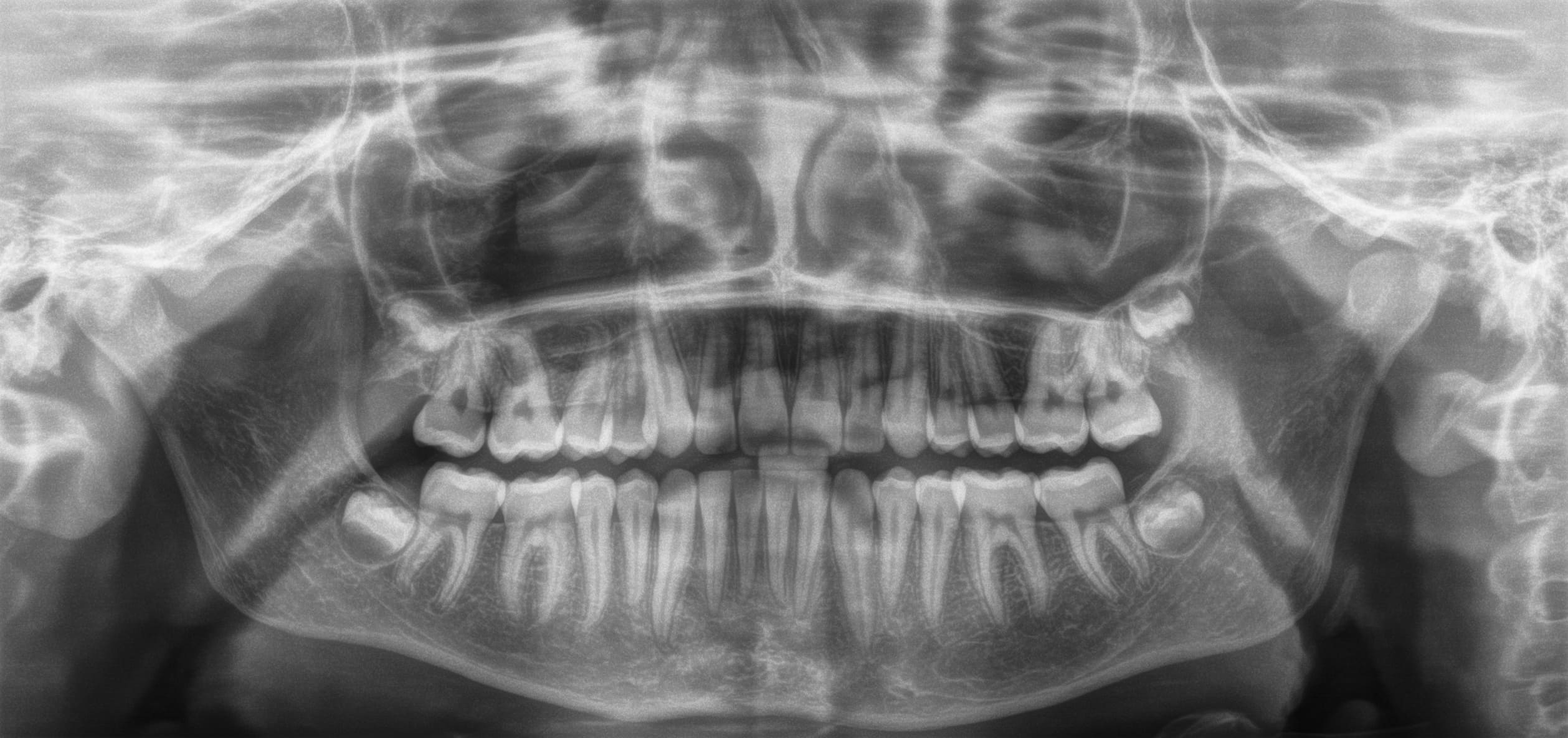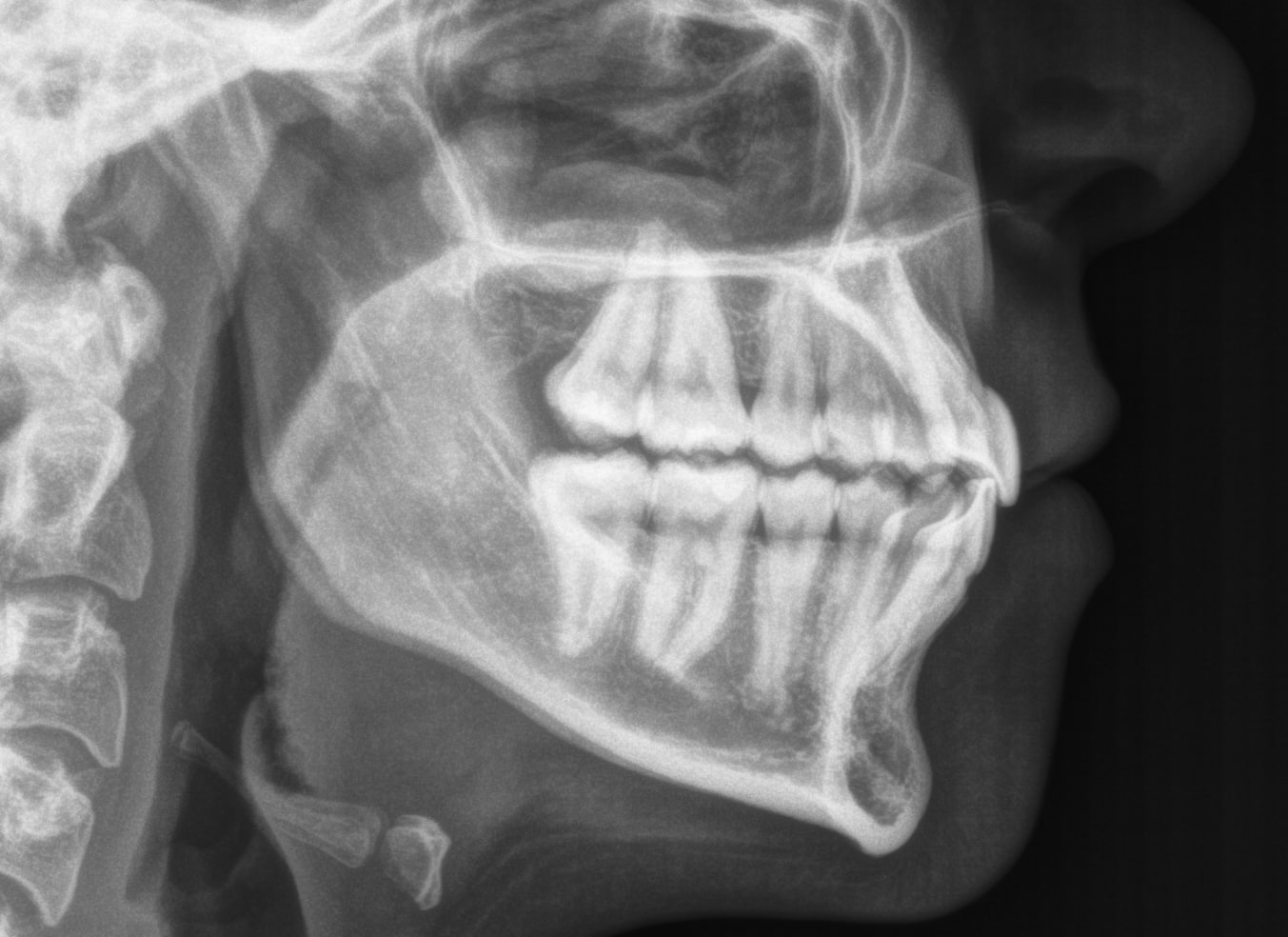
In order to create an ideal and detailed treatment plan, Dr. Amin and Dr. Vaziri need to have the best understanding of the position of your teeth within the bone and the position of the jaws within the skull. Not having the proper X-ray images and trying to come up with a treatment plan is like being in a dark room and trying to find the way out!
During your consultation appointment, some X-ray images will be taken to provide the necessary information for your customized treatment plan.
Periapical

The disadvantages are these images are two dimensional and too many images are required to cover the whole mouth.
Panoramic

The disadvantages are these images are two dimensional, images of the different structures may overlap each other, images of the objects in the picture may not be proportionate to their actual size, and the lower resolution makes it a poor tool for diagnosing cavities.
Lateral Cephalometric

Disadvantages here are images of different structures and the opposite side may overlap each other, images and the actual profile may not be exactly the same size, only one side of the face is represented, and the images are two dimensional.
Cone Beam Computed Tomography (CBCT)
As mentioned above, the main disadvantage of the previous X-rays is that two-dimensional images are representing a three-dimensional structure. CBCT, on the other hand, provides a three-dimensional representation which makes it one of the best tools for precise diagnosis and treatment planning. Disadvantages here are increased radiation and a higher cost than regular X-rays.

Computer Aided Surgical Stimulation
A fairly new approach that uses the data from CBCT to virtually plan the surgical orthodontic cases. This approach provides the most comprehensive treatment planning that is available today. We would like you to know that we are one of a few offices in the nation that utilizes this technique.
